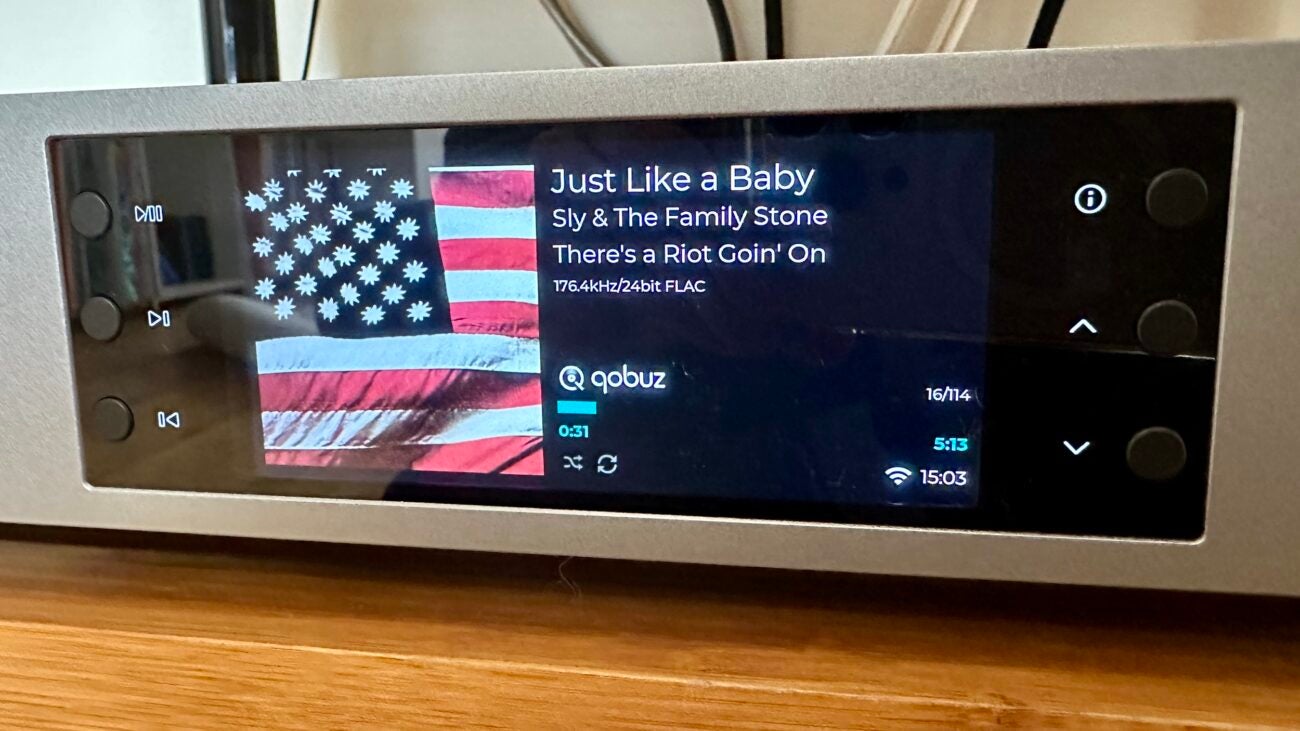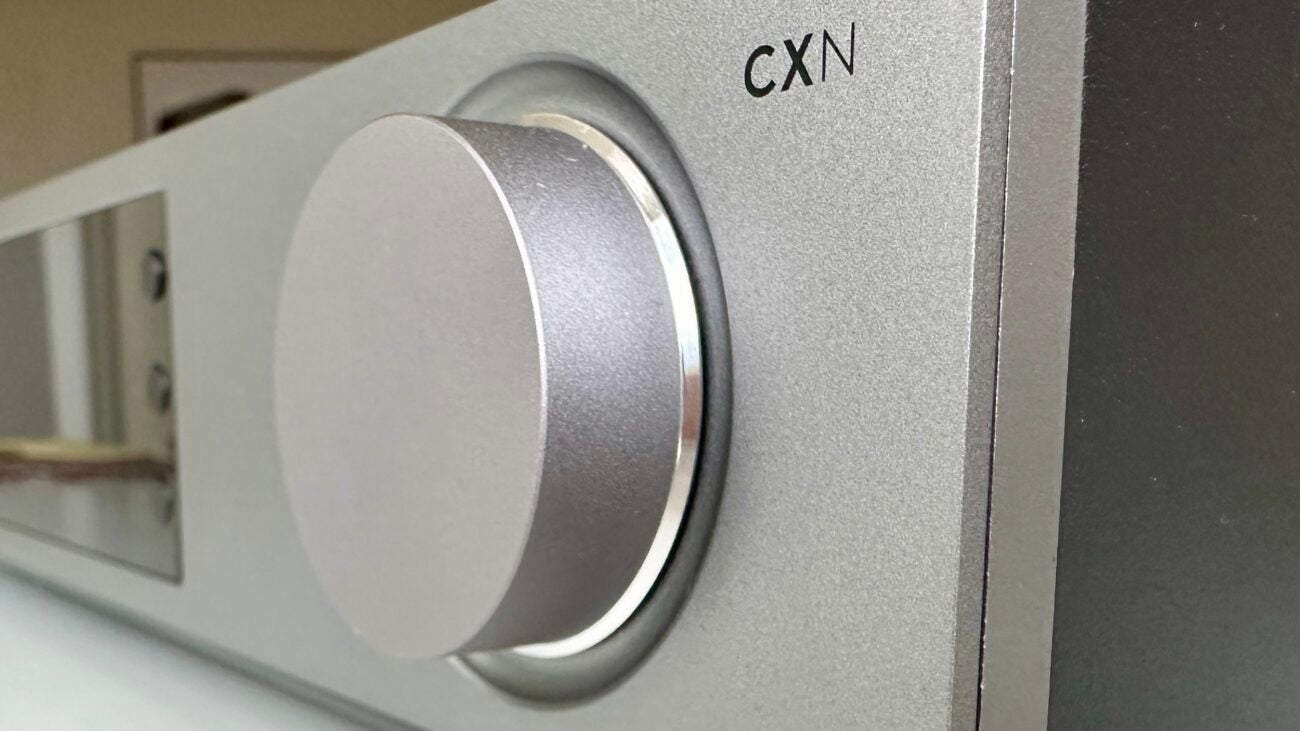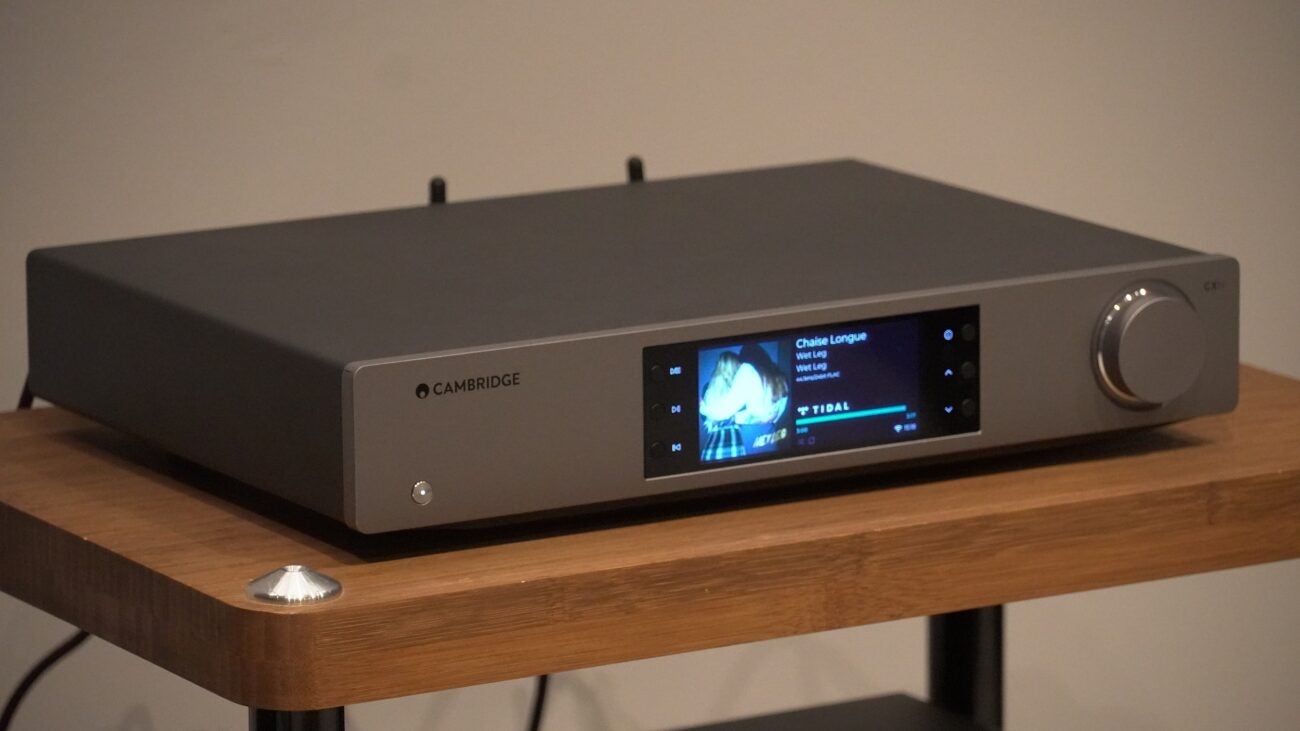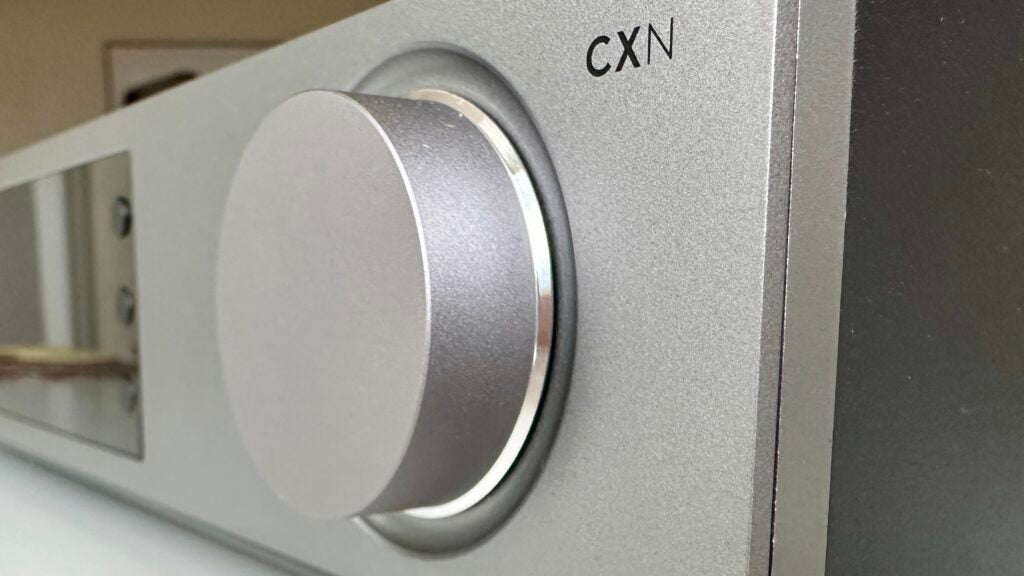Cambridge Audio CXN100 Review
Apparently, Cambridge Audio has decided being the best isn’t quite good enough…






Verdict
Cambridge Audio’s strike-rate where music streamers is concerned is enviable – and I can now add the CXN100 to the hit-list.
Pros
- Balanced, energetic and engaging sound
- Great specification
- Well-executed control app
Cons
- Not without competition
- Needs a moment’s care with system-matching
- Not (unlike other Cambridge Audio equipment) offered in black
Key Features
- Gen4 StreamMagicSupports Spotify Connect, Tidal Connect, Deezer, and Qobuz streaming
- DACSwapped from Wolfson DAC to ESS ES9028Q2M SABRE32 Reference DAC
- Roon ReadyCertified to operate within the Roon ecosystem
Introduction
It’s tough to be a new Cambridge Audio music streamer – you have big boots to fill and tough acts to follow.
Not only that, but the company’s previous music streamers have been so successful they’re inspired any number of competing companies to up their game. All of which begs the question: has Cambridge Audio moved the music-streaming game on yet again, or is it treading water?
Availability
In the United Kingdom you’ll have to part with £899 to secure the CXN100. That translates to £1099 in the United States, while customers in Australia will have to hand over AU$1899. Proper money for a music streamer, in other words, and not without competition at the price…
Design
- 85 x 430 x 305mm (HxWxD)
- 121mm hi-res screen
- Lunar grey finish
Even before you see the manufacturer’s logo, the CXN100 looks like a Cambridge Audio device – that lunar grey finish is quite distinctive in a world where silver means silver.
It’s a clean and tidy looker, with only a little power button at one end of the fascia and a big volume control (for when the CXN100 is functioning as a pre-amp) at the other to distract from the big (121mm), crisp full-colour screen in the centre. Build quality and finish are both very decent – which is just as well when you consider how much money Cambridge Audio is asking for the CXN100.

There are a few physical controls on either side of the screen, where they’re nigh-on invisible before you get up close. They deal with play/pause, skip forwards/backwards, and ‘go’ (for when you’re using them to scroll through the on-screen menus).
But to be honest, the vast majority of the time you’re likely to use the Cambridge Audio StreamMagic control app that’s free for iOS and Android. It’s easy to navigate, simple to customise, and seems nice and stable no matter how you might try to provoke it.

As well as having Deezer, Qobuz, Spotify Connect and TIDAL Connect streaming options built in, it also includes access to internet radio via MPEG-DASH. All of which makes the idea of spending any more money on the optional CX Series remote control handset seem pointless.
Features
- ESS Sabre ES9028Q2M
- Capable up to 32-bit/768kHz and DSD512
- Plenty of physical and wireless connectivity
At a glance, the CXN100 doesn’t look all that much different to the (extremely well-regarded) CXN v2 it replaces. Look at the spec-sheet rather than the device, though, and changes become apparent.
The most obvious of the lot is the switch from the Wolfson DAC to the ESS Sabre ES9028Q2M. This allows the CXN100 to be capable of handling digital audio files of every worthwhile type up to 32-bit/768kHz and DSD512 resolution. The streaming module, meanwhile, is upgraded to the Gen4 StreamMagic device that was first deployed in the company’s Evo range of all-in-one streaming systems.

Wireless connectivity runs to dual-band Wi-Fi (naturally) and Bluetooth 5.1 (with just the bare-bones SBC and AAC codec compatibility) – the two little aerials that facilitate wireless connection are now far smaller and less obtrusive than before. Apple AirPlay 2 and Chromecast are available too, the CXN100 is Roon Ready, and on top of this the device is compatible with Apple, Google and Roon multi-room protocols too.
Physical inputs, meanwhile, are similarly numerous. There’s an Ethernet socket, a couple of USB inputs (one type A, one type B), plus digital optical and digital optical inputs. Outputs run to optical and coaxial (for use with an offboard DAC), a pair of balanced XLRs and a pair of unbalanced RCAs. There’s also a comms bus loop, which is handy for connecting other Cambridge Audio equipment.

Sound Quality
- Analysis and entertainment in fairly equal measure
- Punchy, detailed, and confident sound
- Requires a moment’s thought when system-matching
First things first: everything I’m about to say regarding the way the CXN100 sounds depends on your having done a moment’s system-matching. Every electronic component responds to and is influenced by the other links in the audio chain, of course – and this Cambridge Audio will not thank you for pairing it with bright, treble-happy electronics and/or speakers. As long as you make sure that’s not the case, though, then read on – because the news is all good…
Certainly, the CXN100 isn’t all that fussy about the type of music you like to listen to or, to a lesser extent, how high its resolution. Naturally enough it does its best work with big, information-rich digital audio files, but it’s not going to turn its nose up at Spotify’s free tier or compressed internet radio stations. Which is more than can be said for some competing designs.

Do the right thing where content is concerned, though, and the CXN100 is a thrillingly complete and entertaining listen. During the course of this test, I listened to everything from a 16-bit/44.1kHz FLAC file of Etienne de Crécy’s Super Discount via TIDAL and a 24-bit/176.4kHz FLAC file of Sly and the Family Stone’s There’s a Riot Goin’ On to a DSD128 file of Bill Evans’ Live at Art D’Lugoff’s Top of the Gate – and in broad terms it didn’t faze the CXN100 in the slightest. At every turn, it sounded engaged and engaging – and ultimately, I spent far longer listening to it that was necessary for the purposes of this review, simply because I wanted to.
The tonal balance is not too warm and not too cold, but a Goldilocks-tastic ‘just right’. Frequency response, from the deep, textured and implacably punchy low end to the crisp, shining top, is smooth and even. And in the midrange, the Cambridge Audio communicates with zeal, revealing all the character in a vocalist’s performance as well as their tone and technique.
The soundstage the CXN100 describes is big and organised – and it’s able to tie every individual strand of even the most complex recordings into a singular, unified whole. At the same time, though, it gives each element enough room in which to express itself fully – and singers enjoy a little pocket of space towards the front of the stage where they can articulate fully, even while they form part of the overall presentation.

Dynamic headroom is considerable when a recording switches up its levels of intensity or attack, and the CXN100 is also alive to the more subtle harmonic variations that are apparent in, for example, Bill Evans’ piano from one keystroke to the next. Detail levels are without exception high, and the Cambridge Audio can serve them up with just the right sort of emphasis – it doesn’t miss any information, but it’s not show-offy or analytical about it. It just paints as complete a picture as possible.
Rhythmic expression, thanks to strict control of the attack (and decay) of bass sounds, is naturalistic and convincing. In fact, the Cambridge Audio demonstrates authority across the frequency range. But most of all, it demonstrates a positivity and directness that makes for an entertaining and occasionally enthralling listen.
Latest deals
Should you buy it?
Music streaming is a big part of your audio diet
You can pay less (or plenty more) than this, of course – but the CXN100 has created its own sweet-spot.
You intend to include it in a toppy system
It’s not all that easy to provoke the CXN100 – but it can be done, especially with treble-happy partners.
Final Thoughts
The CXN100, it seemed to me, was always on a hiding to nothing. Good and it’s no more than anyone has come to expect from a Cambridge Audio music streamer, ‘bad’ and it writes its own headlines. Happily, it’s quite easy to upgrade to really very good indeed…
How we test
We test every music streamer we review thoroughly over an extended period of time. We use industry standard tests to compare features properly. We’ll always tell you what we find. We never, ever, accept money to review a product.
Find out more about how we test in our ethics policy.
Tested for several days
Tested with real world use
FAQs
The CXN100 is priced at CXN100 costs £899 / $1099 / €1049 and is available to purchase from the retailers such as Richer Sounds and Amazon.








